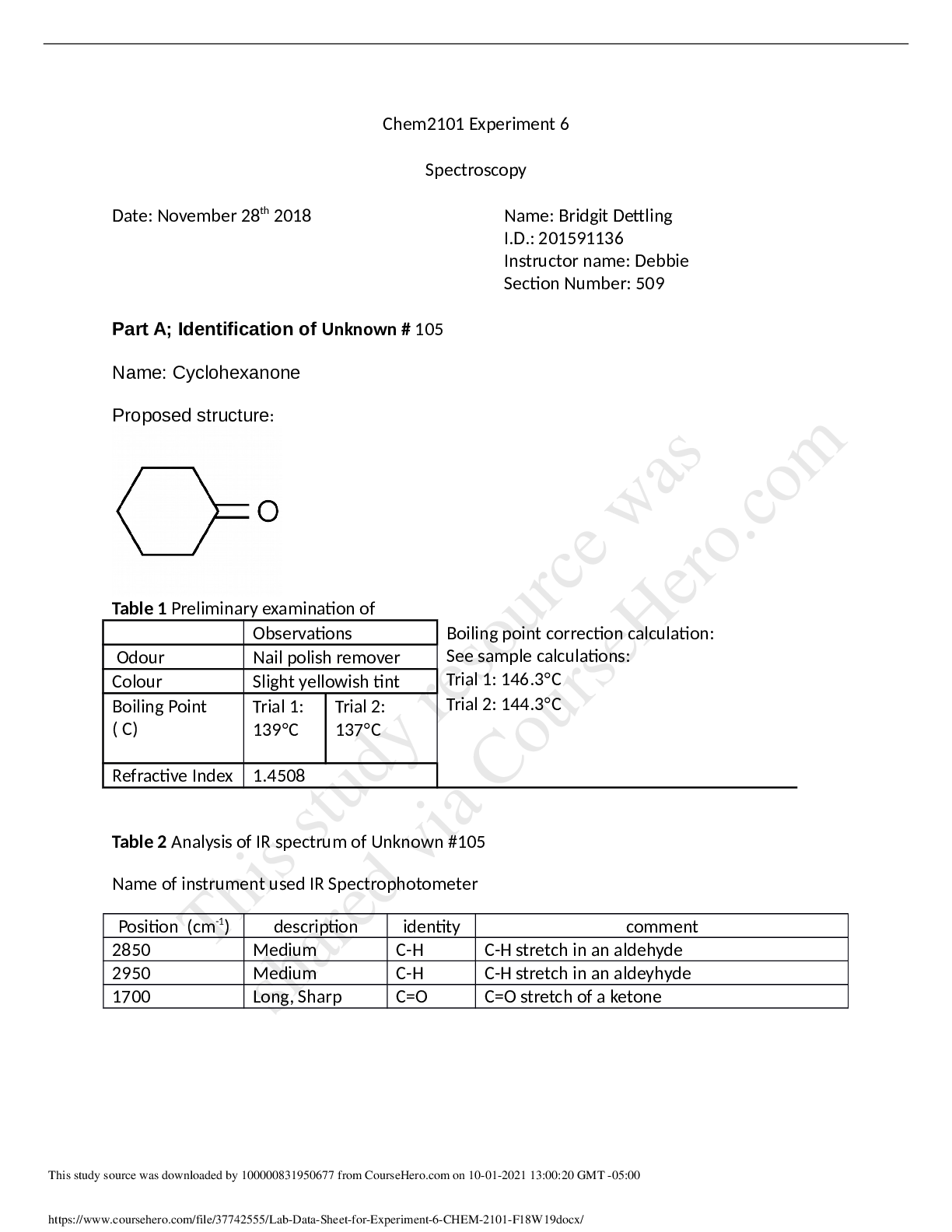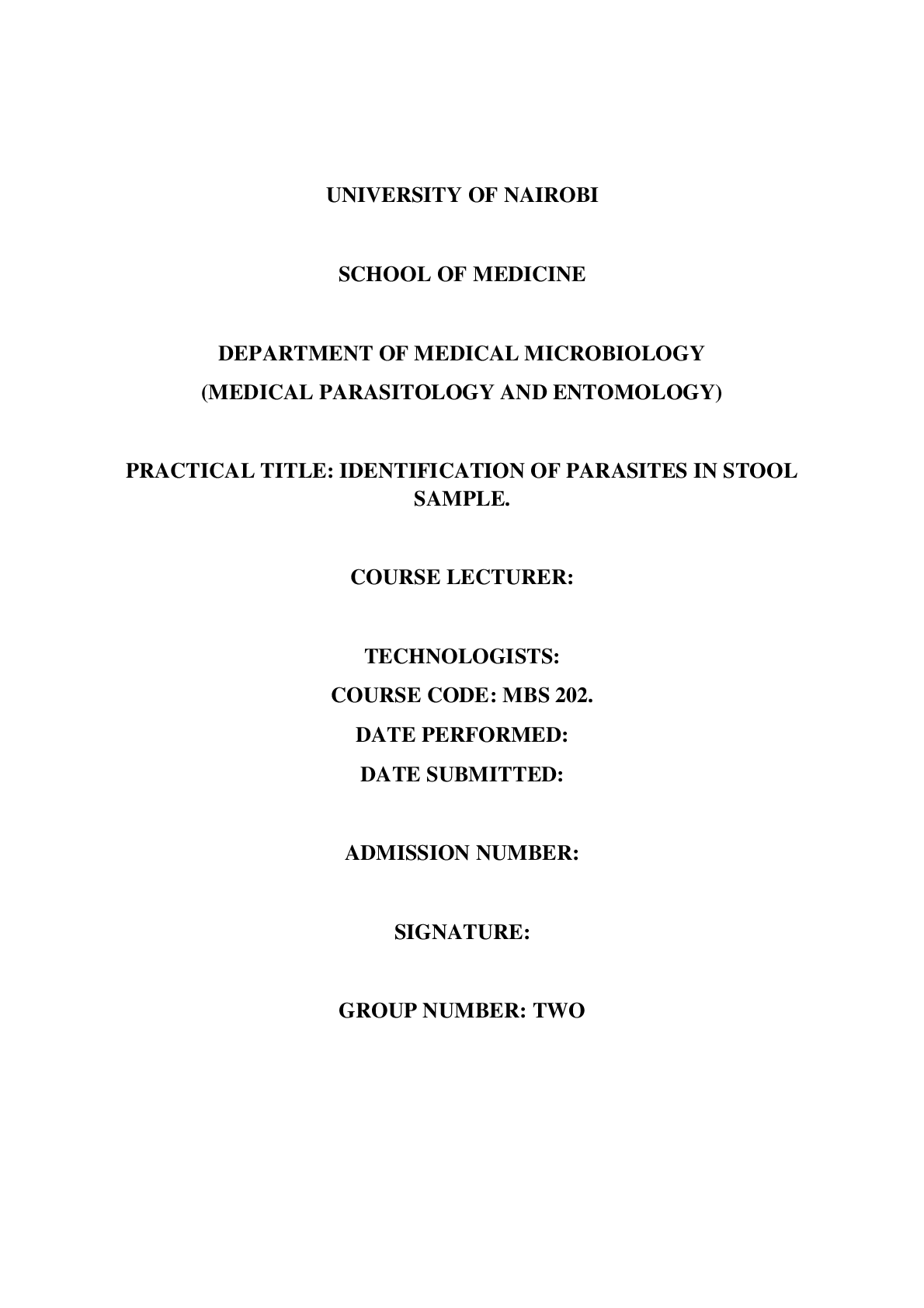Chemistry > Experiment > Experiment_1_-_Organic_Chem (All)
Experiment_1_-_Organic_Chem
Document Content and Description Below
Discussion: Polarity is an example of a physical property of compounds. Polarity affects solubility of molecules. This indicates that polar solutes will dissolve better and faster in polar solvent... s and likewise for nonpolar molecules. In the lab experiment, this idea was further observed with the use of two organic compounds, malonic acid and biphenyl. In the part A of the lab, malonic acid was determined to be soluble with water and methanol. According to the Lewis structure of malonic acid, the molecule is polar. This means that there is a net dipole due to the differences in electronegativity of the atoms within the molecule. Malonic acid was soluble in water and methanol because the two solvents were also polar molecules. In the experiment, it was observed that the acid dissolved faster in water than in methanol because water was more polar. However, malonic acid was insoluble in hexane. This was due to the solvent being a nonpolar molecule. The second compound, biphenyl, was a nonpolar molecule according to its Lewis structure. From the lab experiment, it was discovered that biphenyl was insoluble in water and methanol, while it was soluble in hexane. Biphenyl was insoluble in water and methanol because of the differences in their polarity. The nonpolar solute did not dissolve in both of the polar solvents. Meanwhile, biphenyl was soluble in hexane because the solvent was also a nonpolar molecule. Solubility can also be synonymous to miscibility. Miscibility specifically refer to the mixing of liquids and to be completely dissolve with one another to create a homogenous solution. In the lab, water and ethanol were determined to be miscible with each other, while water and diethyl ether were miscible with each other. This also relates to the polarity of the molecules. Water is a polar liquid; therefore, it was miscible in ethanol, also a polar liquid. Water was immiscible with diethyl ether and created two layers of liquid because it was a nonpolar liquid. Boiling point and melting point are also examples of physical properties of molecules; Boiling point and melting point determines which molecules will have less rigid structures and have stronger intermolecular forces. The purpose of Part B of the lab experiment was to determine the boiling point of an unknown liquid sample. The chosen unknown liquid sample was determined to have a boiling point of approximately 84oC. The unknown liquid sample was colourless and had a pungent odour. From these physical properties, the unknown sample D was determined to be 2-propanol. Meanwhile, the purpose of part C of the lab experiment was to determine the melting point of an unknown solid. In the experiment, the unknown sample began melting at a temperature of 95oC and then reached 96oC, in which all the solid sample had melted. The unknown solid sample was slightly yellow in colour. It had a crystalline appearance [Show More]
Last updated: 2 years ago
Preview 1 out of 6 pages

Buy this document to get the full access instantly
Instant Download Access after purchase
Buy NowInstant download
We Accept:

Reviews( 0 )
$12.00
Can't find what you want? Try our AI powered Search
Document information
Connected school, study & course
About the document
Uploaded On
Oct 01, 2021
Number of pages
6
Written in
Additional information
This document has been written for:
Uploaded
Oct 01, 2021
Downloads
0
Views
166


.png)

.png)













